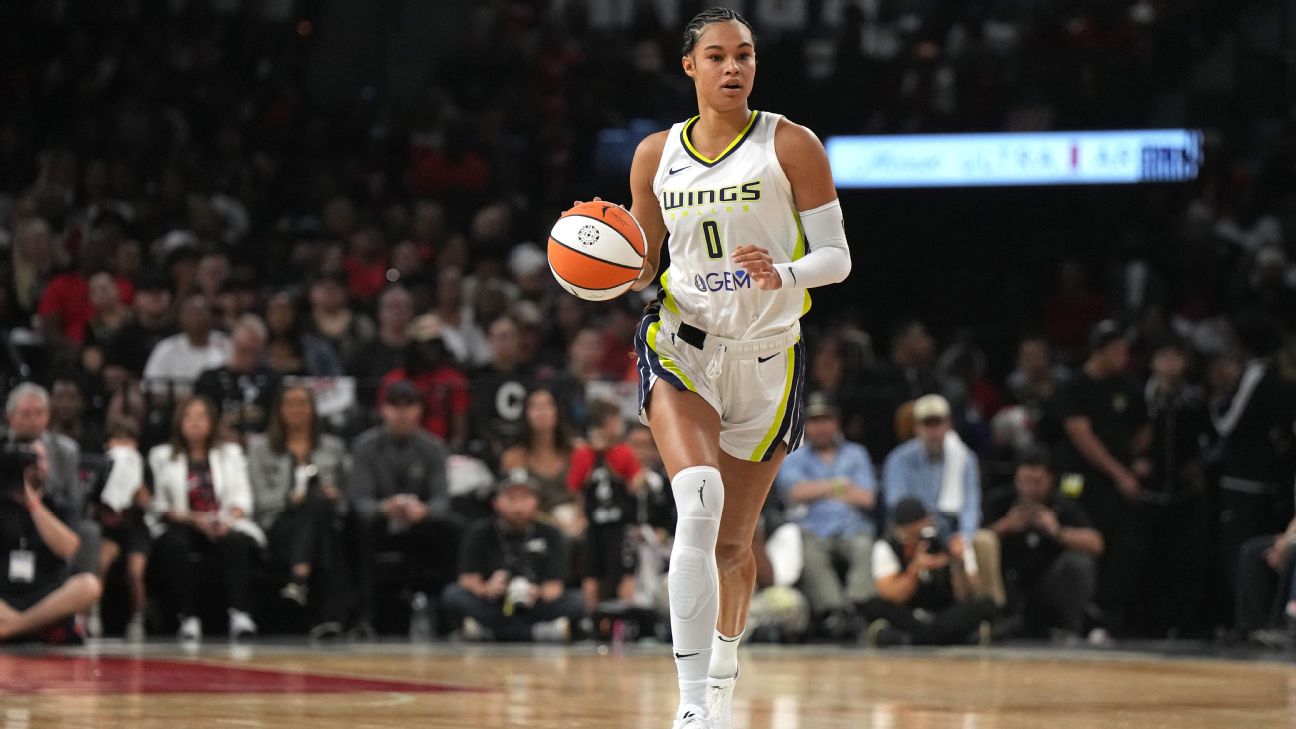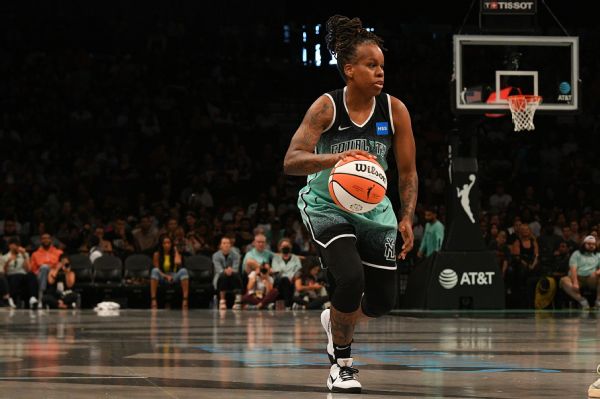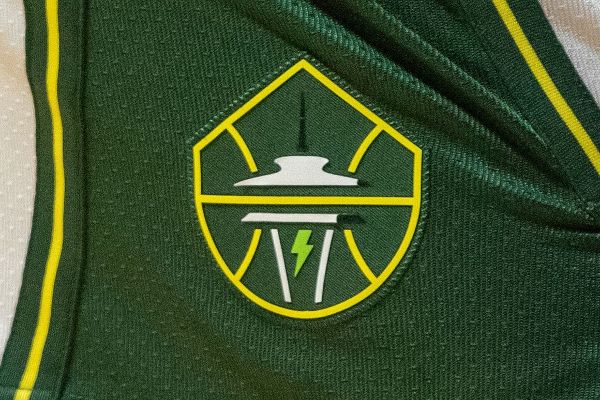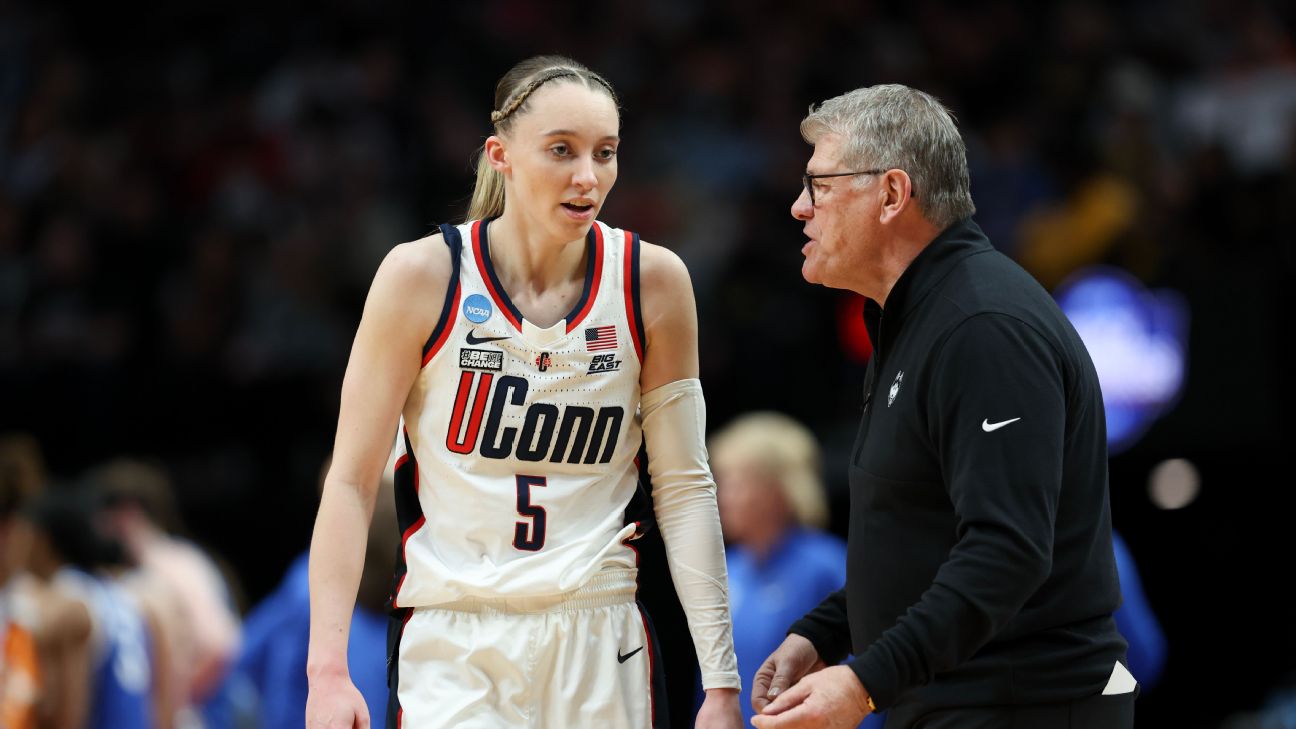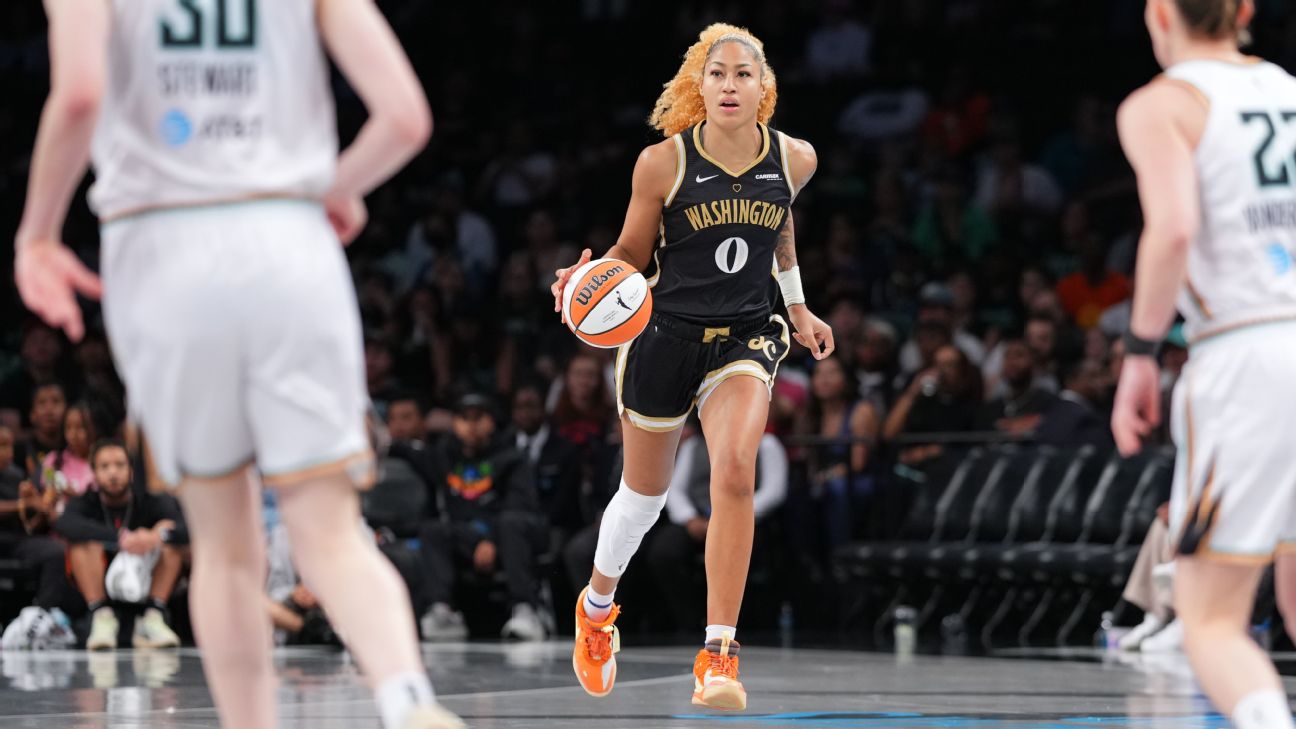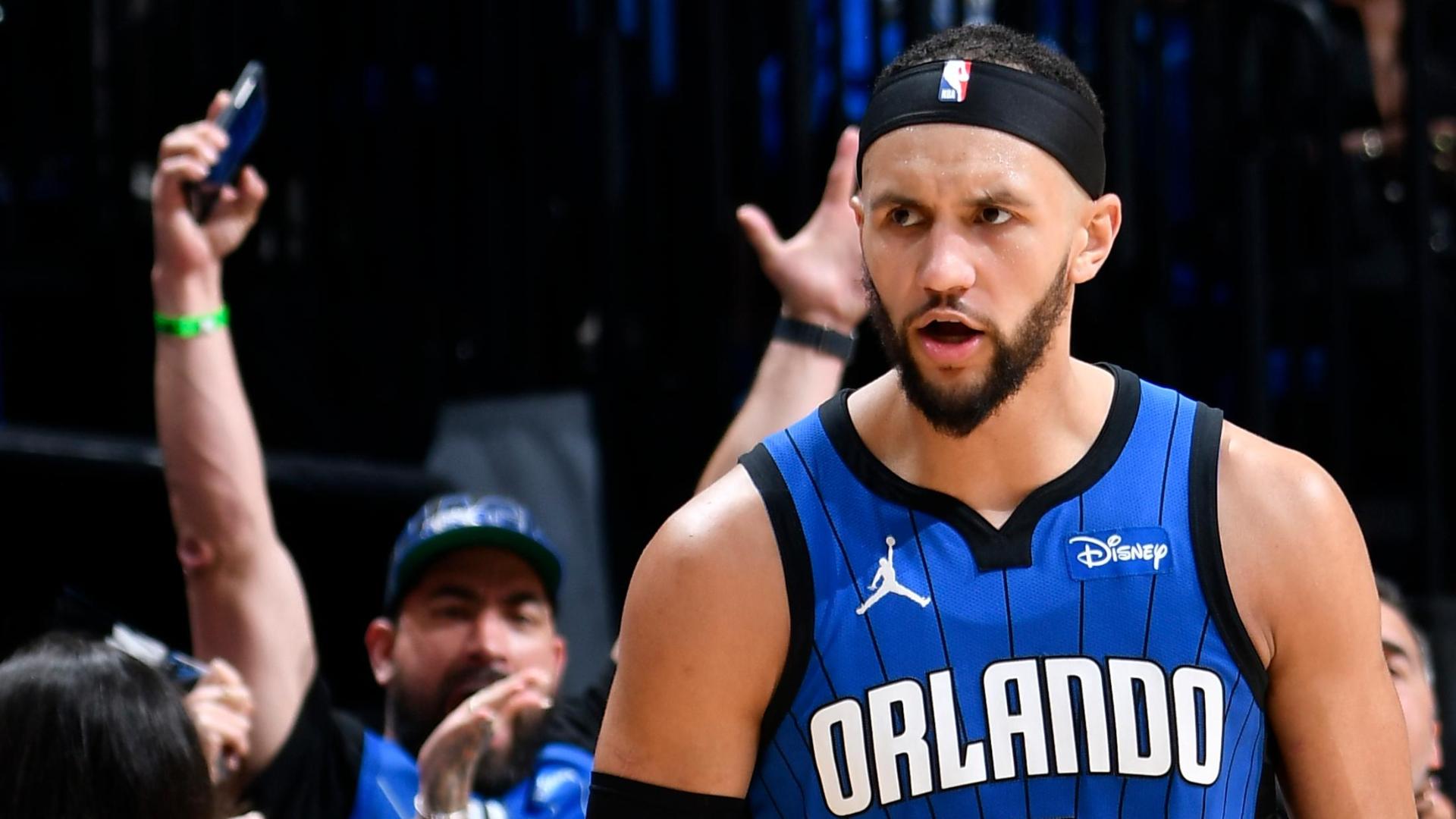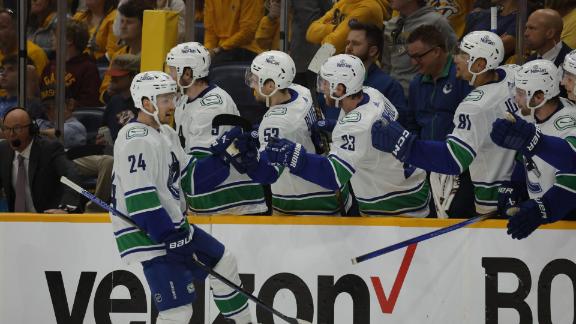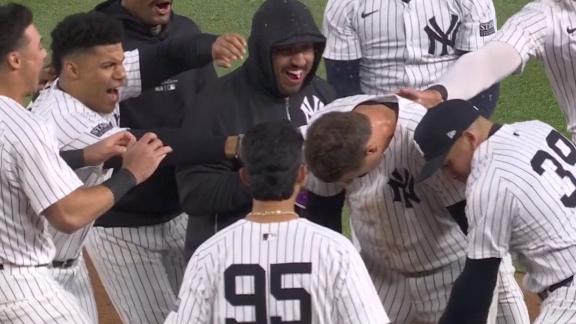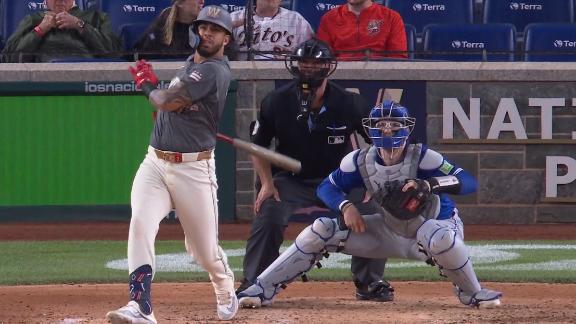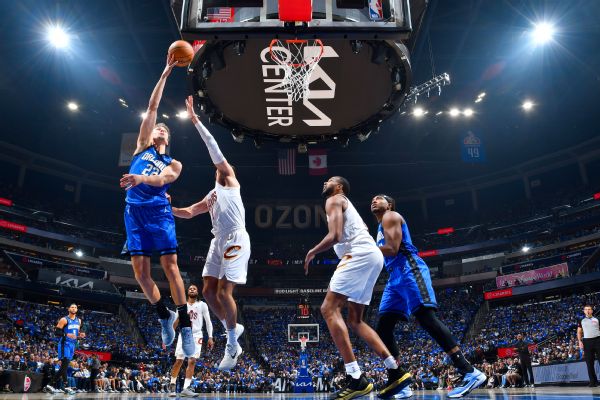![MJ Melendez [608x342]](https://a.espncdn.com/photo/2024/0423/r1323513_608x342_16-9.jpg)
Jos Soriano pitches 6 sharp innings as the Angels beat the Guardians 6-0
As the 2024 season nears its one-month mark, the Kansas City Royals -- the team that matched a franchise record with 106 losses last year -- are not only on the right side of .500, but feature one of the best run differentials in baseball.
To better understand where they are, let's try to understand where they were -- merely a few months ago, at the end of a disastrous 2023 season. If Kansas City were in the early stages of a rebuild, it might not be fair to label that as a disaster. But the current rebuild can be traced to at least 2018, as the back-to-back pennant winners of the last decade were gradually dissolved. Six years down the line, you expect a team in rebuild mode to be emerging, not bottoming out. So, yes, that's a disaster.
Even worse: In ESPN's Kiley McDaniel's preseason farm system rankings over the past three years, the Royals have finished 12th, 28th and 26th, respectively. And in McDaniel's prospect rankings for 2024, they failed to land a single prospect in the top 100.
None of this reads like the resume of a breakout team, but check out the current standings -- the Royals have a winning percentage in the top 10 of the majors.
The obvious conclusion is that it's a fluke. This happens almost every season. Some team emerges from the ether, inspiring a spate of "are they for real" analysis. (Like this one.) At the end of April last year, the Pirates had the best record in the National League with a run differential that justified that mark. They finished 10 games under .500.
The Royals have occupied an early spring "if the season ended today" playoff slot for most of the schedule to date. It's been a surprising run and an enjoyable run. The question is whether it's going to be a long run.
If the Royals' strong start turns into a season-long push for the playoffs, the beginning of that quest will be traced to the organization's decision to actually try this past winter. That might seem like a no-brainer, but when you look at the team-by-team behavior in the recent hot stove marketplace, it's not something that fans can take for granted.
According to Spotrac, the Royals ranked sixth in free agent spending this offseason, committing more than $110 million to eight free agents: pitchers Seth Lugo, Michael Wacha, Chris Stratton and Will Smith, and hitters Adam Frazier, Hunter Renfroe, Garrett Hampson and Austin Nola.
It's not a group of stars but, highlighted by veteran starters Lugo and Wacha, it's a group of eight players with recognizable names and a good amount of big league success behind them.
"Everything in this game starts and ends with starting pitching," Royals general manager J.J. Picollo said. "That was clearly the No. 1 objective, trying to secure two starting pitchers."
Many were surprised to see a team like the Royals, one of four that lost more than 100 games in 2023, go on a spending spree during an offseason in which a number of not just winning clubs, but playoff clubs -- most notably the reigning World Series champion Rangers -- didn't.
However, one thing to understand is that the Royals, as bad as they were in 2023, probably weren't 106-loss bad in terms of true talent level. According to their run differential, they were more of a 98-loss team. Coming into last season, their consensus over/under was around 70 wins, marking them as 92-loss bad.
As miserable as last season was, they did post a .423 winning percentage during the second half (a 68-win pace), as they went 15-12 after Sept. 1 and finished on a 12-5 sprint.
These are not exactly shining beacons of hope, but they are data points that improve the baseline from which the Royals were building entering 2024, allowing the team to reframe the way it viewed itself. Statistically, even without change, they would have projected to be better. That in itself justifies a measure of offseason aggression, but it was bolstered by the state of their division and some general payroll retrenchment in their economic tier, which created opportunities that multiplied as the Royals' interest to add circulated in free agent circles.
"I thought we were going to end up trading for a starting pitcher and it just didn't evolve. The opportunity wasn't there," Picollo said. "But we had done our work from early in June and knew who the free agents would be and how we could put together a rotation that would be competitive again."
A 70-win baseline, considered in the context of an American League Central landscape that might not yield a 90-win team, is a glimmer of hope. It's scalable. It allows a GM to go to ownership with a plan to shore up the roster with targeted additions, rather than a plan to blow up everything and begin again from scratch.
Luckily for Picollo, owner John Sherman was on board with the patching approach even though the Royals were one of the teams affected by the ongoing RSN crisis around the game.
"He wasn't overly concerned about where he feels like the long-term prognosis of where this may go," Picollo said. "In short term, he said go ahead and do what you got to do. Which was nice to hear. This is his fifth season as the owner, and we haven't had good seasons. I think his desire to win was very evident, very supportive."
The key to the Royals' start has been pitching, especially from what arguably has been baseball's most consistent rotation. Kansas City ranks third in quality starts, fifth in overall ERA and fourth in rotation ERA.
The quintet of Wacha, Lugo, Brady Singer, Alec Marsh and Cole Ragans rank second in MLB in innings per start. And yet the Royals are one of just three teams without a single hurler who has thrown at least 100 pitches in a game -- showing that their efficiency has come as a group, not just from one or two sudden spikes.
The driving force for the unit has been a renewed focus on throwing strikes while keeping the ball down in the zone. The Kansas City rotation ranks 10th in strike percentage -- up from 17th last season -- and third in pitches classified as low, according to TruMedia.
"You're constantly watching and see how guys are attacking hitters and what sequences they are using," Lugo said. "You know what happens when you make quality pitches in the strike zone. It kind of feeds along the whole staff."
This approach runs counter to the strategy of some teams, like the ever-progressive Tampa Bay Rays, who attack the top of the zone with high-spin fastballs. But even if the Royals' collective approach doesn't exactly ride the wave of current trends, it is a classic formula: Pound the zone, work quickly, let your athletes shine on defense.
So far, it's paid off. Royals pitchers rank just 24th in strikeout rate but are 10th in walk rate and fifth in home run rate. Meanwhile, the defense behind them that rates among the best in MLB in defensive runs saved and the infield leads all teams in out percentage on groundballs.
"Pitching and defense, right, the old adage," manager Matt Quatraro said. "If you're throwing a lot of strikes, your defense is on their toes. And especially the closer the games are, the more heightened your awareness is. And I think that's definitely something that's building."
The ability to capitalize on overlooked talent from other teams through analytics-based optimization might be a burgeoning trait in the Royals' organization. We would need to see more of this to place Kansas City in the same category as the Los Angeles Dodgers, Rays and a handful of other teams. But there have been a couple of key recent success stories.
Last year, Picollo was able to turn a low-risk flier on veteran reliever Aroldis Chapman into the in-season trade that brought back Cole Ragans from Texas. Ragans has been a different, more dominant pitcher for the Royals since being acquired, an emerging ace with stuff so fierce that he's been likened to Jacob deGrom.
Ragans isn't the only positive development in the second-chance marketplace. A year ago, reliever James McArthur was a nondescript, former 12th-round pick of the Phillies. He was acquired in a low-level trade last May after Philadelphia designated him for assignment. At that point, McArthur was 26 years old and had just 16 innings above Double-A, during which he posted a 7.31 ERA.
Now, McArthur is the Royals' closer. He's saved nine games, including five this season, and has a 35:4 strikeout-to-walk ratio.
"The process to acquire [McArthur] was great," Quatraro said. "A lot of input from a lot of different people in the pitching department, the front office, the collaboration to see what they thought he could become. And then once we acquired him, the tweaks to the usage and the grips, and the things in pitch design.
"That part of it is really exciting because that shows a lot of work within different departments to find a diamond in the rough."
Quatraro, who was hired as manager following the 2022 season, has played a key role in the Royals' big league development, adding perspective that he and pitching coach Brian Sweeney internalized from their previous stops in Tampa Bay and Cleveland, respectively. It was a needed element of progressiveness for the Royals, who have typically been run along traditional scouting-and-development lines.
"They represented something different than I had been around in the past," Picollo said. "(There are) more objective decisions being made, more reliant on data. It was really evident to us in spring training that we were going to have to really beef up our [analytical] department to keep up with what their demands were. And it was somewhat uncomfortable at times, but the way Q works and the way he communicates made it easier to digest."
This bodes well for the Royals as they wade into the roster churn that always happens around MLB as the schedule progresses. All it takes is two or three of these success stories per season to bolster the depth of an organization, helping fill gaps while the minor league system ramps back up to speed.
"This is a good group of young guys that are really good at baseball," said reliever Will Smith, who has been a member of MLB's past three World Series champions and broke into the majors with the Royals in 2012. "J.J. and the front office did a great job of bringing in some vets that have had success in the big leagues before, just trying to teach these young guys how to be winners. It's been fun so far."
The Royals' individual leader in defensive runs saved is Bobby Witt Jr. This greatly enhanced aspect of his game can sometimes be overshadowed by his offensive prowess, which went to another level during the second half of 2023 -- and stayed there.
"Bobby is really driven and wants to learn. He's very coachable," Picollo said. "I think he's just scratching the surface what he's going to do."
From Witt's debut in 2022 through July 27 of last season, his .724 OPS ranked 145th among 263 hitters with at least 500 plate appearances. Since then, his .956 OPS ranks 11th and he's in the top 20 in hits, runs, RBIs, average, slugging and stolen bases. And he's still only 23 years old.
"(The improvement) was just becoming prepared as much as possible each and every day," Witt said. "Knowing that there's more than just being ready at game time. You've got to make sure your body is right for each and every game. You've got to make sure your preparation is right."
If it sounds simple, that's no accident. Witt, whose natural, eye-popping gifts are apparent in almost every game he plays, nevertheless had an early tendency to try to do too much -- at the plate, in the field and on the bases. Now he operates by a mantra he's famously sketched onto the equipment he uses in games: simple.
"I feel like I'm at that point where I just really try to control what I can control," Witt said. "Just go out to the field and take things pitch by pitch and not worry about the results."
Witt's stunning transmogrification from potential superstar to actual superstar is what sets this current Royals feel-good start into one where you can't help but stroke your chin plaintively as you ponder the possibilities. That's what the impact of one transcendent star can do.
Think of it like this: Let's say that Picollo's offseason overhaul of the team's personnel and the developing strategy on the run-prevention side brings the non-Witt portion of the Kansas City roster to .500. A player putting up numbers like Witt on both sides of the ball is an MVP candidate, one worth anywhere from five to six wins above average in the bWAR framework. (Witt currently leads all AL position players in bWAR).
A player at six wins above average pushes the profile of an 81-81 team to 87-75. In the AL Central, that's contention. And that's the approach in K.C. -- shore up the holes on the dossier to stabilize the baseline, and hope the upside is provided by Witt and the roster's other most talented youngsters like Vinnie Pasquantino, M.J. Melendez, Maikel Garcia and Ragans.
All of this is a little cold, though, because Witt's rise is so much more to the Royals than a WAR total. He is the face of pretty much everything the franchise is trying to do, whether it's returning to contention or the field or stabilizing the franchise's future with the downtown ballpark the Royals still hope to get built within the next few years. That's saying something given the ongoing presence and production of (possible) future Hall of Famer Salvador Perez, the last remaining link to the Royals' 2015 champions.
"[Witt's] really special," Picollo said. "His tools, his ability to take in information and make adjustments along the way just stood out for us. He's going to continue to get better and better. I don't think he's going to hit his prime until he's 27, 28 -- and he's really, really good right now."
And Witt will be with the Royals for those peak years, as he agreed to a complicated 11-year, $288.8 million extension over the winter. While the deal has opt-outs that could shorten it or extend it to as long as 14 years, even in its most basic form it ensures he will remain with the Royals for the foreseeable future and into his free agent window. Witt is the cornerstone player the Royals hoped he would be and he seems intent on becoming to the Royals what Patrick Mahomes has become to the Chiefs on the other end of the Truman Sports Complex.
"He wanted to know from us that we were committed financially to putting a good team on the field," Picollo said. "Now we're still small market, we've still got to be dependent on draft and player development and all those things. But I think in the future, because Bobby's on the team that's going to help us secure some players."
When you are looking for clues about how sustainable the Royals' early-season play might be, Witt is where you start. He's really this good, and he's not going anywhere. It all makes what the Royals are doing now feel more solid.
As for other hints of sustainability, the picture is less clear.
If you've watched the Royals on a regular basis this season, there are lots of reasons to be encouraged. They've won more than they've lost. They've often played well in their losses, which is one reason why their run differential actually marks them as unlucky in the win-loss column.
Through it all, there's one thought that you can't escape: This team lost 106 games last season, a .346 winning percentage.
During the modern era (since 1900), there have been 103 teams with winning percentages that low, not including the Royals and the Athletics last season. Only eight finished .500 or better the following season: Phillies (1904-05), Cardinals (1913-14), Pirates (1917-18), Athletics (1946-47), Phillies (again, 1961-62), Athletics (again, 1979-80), Orioles (1988-89) and, most recently, the Orioles again (2021-22). The high-water mark for those teams was 87 wins by the '89 Orioles.
So, yeah, we're saying there's a chance the Royals have a winning season in 2024, but the history against that scale of improvement is daunting. If they are to overcome that history, a few things have to happen.
This trick of holding down opponents without an elite strikeout rate is going to have to hold up, at least to some extent. Can it?
According to Fangraphs, the Royals' team strikeout rate is 87% of the MLB average, ranking 28th. Since 2015, there have been just 22 teams with relative strikeout rates that low. Just four of those 22 finished with park-adjusted staff ERAs better than league average: the Cardinals (2021 and 2022), 2017 Rangers and 2015 Twins. Those four teams were a combined 2.2% better than league average. The Royals' current park-adjusted ERA is 18% better than average.
That's not very likely to hold up, especially as the weather warms and home run rates rise. The Royals have allowed homers on just 6.8% of their fly balls so far (third lowest in baseball); the MLB average is 7.9. That's another number that just won't hold up for them, but that doesn't mean it has to collapse, especially if Kauffman Stadium plays big as it often does.
In both areas -- walks allowed and dingers -- the Royals will need to support the staff with top-of-the-charts defense, which the infield has provided but the outfield will need to match that over the long haul. Of course, that's the way the team is designed -- elite defense has been the backbone of every contending team Kansas City has had.
Finally, the Royals will need exceedingly good health. It's not a deep organization at the upper minor league levels and, so far, the depth has not been tested. They did not change their Opening Day roster until last week, when they needed a 27th man for a doubleheader against the White Sox.
The good early health has been a boon but no one gets through a season unscathed. The Royals won't go through the schedule with that core five-man rotation. They will also need way more relievers than the nine who have played so far.
That's a lot of things that need to keep working in their favor. Still, focusing on that is really beside the point. The real point is that who would have thought, given where last season ended, that we'd even be doing this kind of deep dive into this franchise a mere few months later.
Great defense that supports a consistent pitching staff of strike throwers, good health, an MVP run by Witt -- these things are all within the realm of reasonable possibility. And given the state of their division and what we've seen of the Royals, the stakes of these developments might actually matter.
They have rekindled the enthusiasm of a fan base always ready to explode when given the slightest reason to do so. By adding at a time when it didn't seem to make sense, Kansas City has laid a platform on which possibility can be given a chance. It's amazing the message that is sent when a team actually tries.
"It was just huge," Witt said. "The veteran leadership we have now with the guys that we signed, and the core group of young guys that we have now coming into themselves. We knew we had this talent the whole time. And now we're putting it all together."


